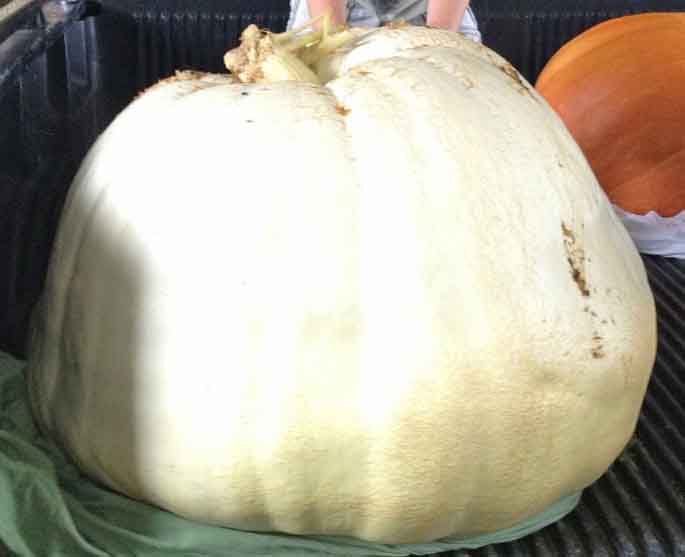Giant pumpkins don't just happen. It takes time and patience if you want to be the only person on your block who has a 300-pound jack-o-lantern.
Gardeners looking to grow a big pumpkin need to start by looking for some seeds from some prize pumpkin parents.
“You have to start with the genetics,” said Bob Westerfield, Extension home vegetable specialist with the University of Georgia College of Agricultural and Environmental Sciences.
To get a really big pumpkin, you’re not looking for the same seed that produces jack-o-lanterns, said George Boyhan, a UGA horticulturalist who as spent many years breeding standard pumpkin varieties that thrive in the Southeast. The 500- to 1,000-pounders that they grow in Maine, aren’t the same species of “pumpkin” found in local pumpkin patches.
“It’s actually a different type of plant than your normal pumpkin,” he said. “It’s another species that grows very large most of the time.”
The typical pie pumpkin’s scientific name is Cucurbita pepo. This larger species is Cucurbita maxima.
Competition pumpkin growers sell the seeds from the previous championship plants for as much as $10 to $20 a seed, but common giant pumpkin seeds are available for less, Boyhan said. One of the best-known common giant pumpkin varieties is Dill’s Atlantic Giant. Its seeds start at about $3 a pack.
Once you’ve got the right seed, it’s time to get it into the ground.
Giant pumpkins need super-rich, heavily composted soil to thrive, Westerfield said.
Test and amend your soil until the pH level is at about 6.5 to 6.8. Pumpkins need to be planted between May 15 and July 1 to reach their maximum sizes by the fall.
If you’re looking to raise a giant pumpkin, you need to put extra effort into making sure it’s watered regularly and properly fertilized throughout the growing season. Westerfield warns not to over fertilize at the beginning because that could stimulate the plant to expend all of its energy growing a super long or thick vine before it produces any fruit.
He suggests fertilizing the plant right after planting, once right after the tiny pumpkins appear and maybe twice again before the end of the growing season.
You may also want to spray the base of young plants with an insecticide that repels squash vine borers, since these can quickly cause irreversible damage.
After the pumpkin plant produces flowers, thin some of the female flowers from the vine. The female blooms are the ones with the tiny fruits at he base of the bud. After the pumpkins emerge, and before they get very large, it is time to thin.
Select one or two of the most promising-looking pumpkins on your plant to keep and pick off the others — that way all of the plant’s energy is directed towards making one or two giant fruit.
Serious championship growers leave only one pumpkin on each vine, Boyhan said. Westerfield suggests leaving two per vine to double your chances of getting a show-worthy fruit.
Once you’ve picked your winners, it’s just a matter of watching, watering and waiting.
Your pumpkin may need to be rolled around from time to time to keep it from getting soft spots. Some growers like to lay down a bed of hay for their prize pumpkins, or keep them on a pallet to reduce the chances of rot.
When late September hits, you should be able to wow your friends and neighbors with what you’ve grown.
There are a lot of giant pumpkin resources, but Boyhan suggested Don Langevin’s “How to Grow World Class Giant Pumpkins.”







